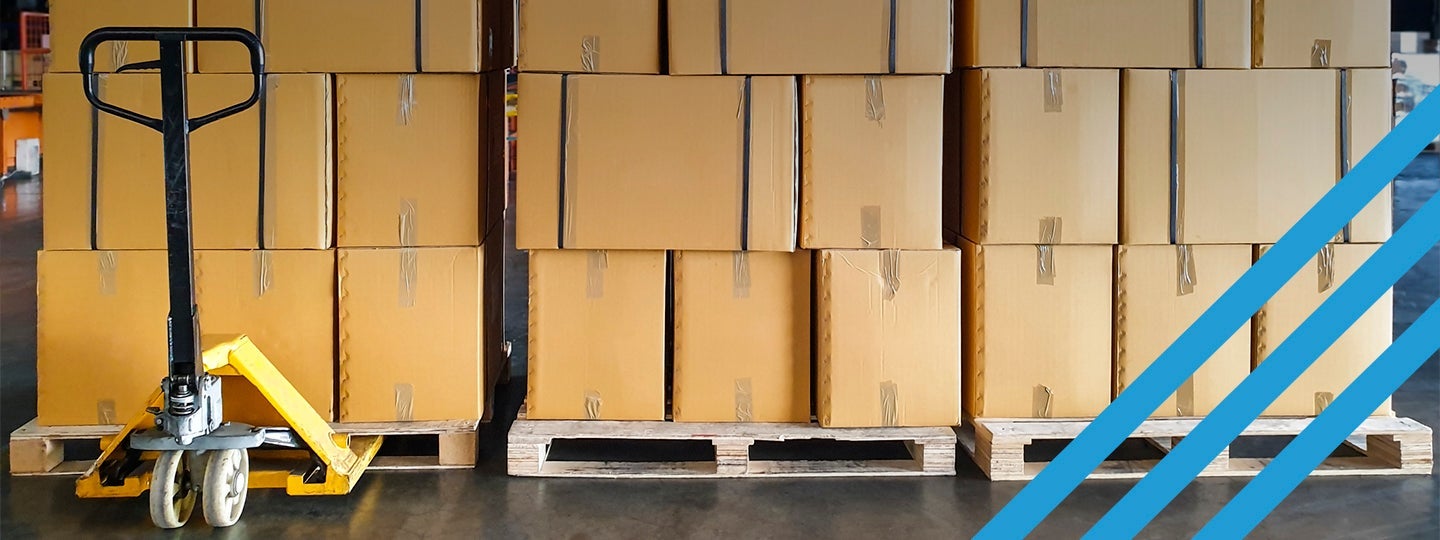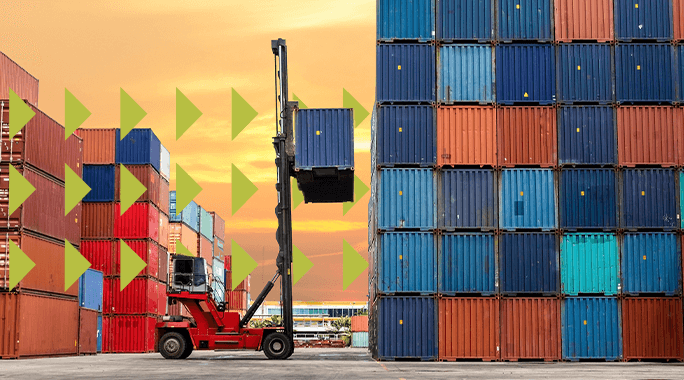BLOG POST
How Volume LTL and Partial Truckload Compare

Reading Time: 4 minutes
Just when you think you have freight shipping options all figured out, here are two more to add to the mix: volume less-than-truckload (LTL) and partial truckload. Knowing about these two services and the difference between them can help you choose between time-efficiency and cost-effectiveness for your "in-between" shipments. Those are the shipments that are larger than the weight and dimensions of typical LTL and smaller than the standard truckload (FTL) shipments.
First, let's briefly cover LTL freight and how it differs from FTL. It may help you decide whether to choose volume LTL or partial truckloads for your in-between shipments.
LTL vs FTL
Standard LTL is used for shipments that do not take up the full cargo space in a truck. Generally speaking, LTL is for shipments that weigh more than 150 lbs. but less than 15,000 lbs., are no more than 10 pallets and no longer than 12 linear feet. The cost for shipping is based on the shipment's classification (which is calculated from the freight's density) plus any surcharges and accessorial fees added on by the carrier.
Full truckload is used for shipments that weigh between 15,000 and 44,000 lbs., and up to 26 pallets. The length of the shipment depends on the truck being used. The price for FTL shipments is market-based rather than determined by classification code, so the rates can fluctuate from day to day.
So how does this all fit in with whether you choose volume LTL or partial truckload? These are subsets of LTL and truckload, respectively, and share the benefits and challenges of each.
Volume LTL: Cost-effective shipping for durable cargo
As a service available through LTL carriers, volume LTL shares similar components as far as pricing, transit time and how shipments are handled. Here's a breakdown:
- Size and weight. Volume LTL is for shipments that are between 6 - 18 pallets, weigh between 5,000 -10,000 lbs, and/or are longer than 12 linear feet.
- Transit time. While partial truckload shipments can share space with other cargo, it does not use a hub-and-spoke system. Fewer stops mean the shipments will generally arrive faster. Should you need your freight to arrive even sooner, consider using overnight freight.
- Durability. The extra handling that comes with LTL shipping at multiple stops (drop-offs and pick-ups, and sorting at the distribution center) can take its toll on fragile and delicate cargo.
- Cost. The cost of the cargo space is shared among all shippers making volume shipping an economical option.
Partial truckload: Shipping for less-durable, time-sensitive cargo
Partial truckload is a subset of FTL and share similar service options. Here's what to consider:
- Size and weight. Partial truckload is for shipping for less-durable, time-sensitive cargo pallets from 8-18 and weight between 5,000 and 27,500 lbs. The length depends on the truck being used.
- Transit time. While partial truckload shipments can share space with other cargo, it does not use a hub-and-spoke system. The fewer stops mean the shipments will generally arrive faster.
- Durability. Shipping directly to the consignee reduces the amount of handling and puts the cargo at less risk of damage.
- Cost. The pricing is based on the market rather than by classification code. Mileage, lane, weight and space used in the cargo area make up a portion of the cost. Pricing by mileage will make shipping longer distances more costly with partial truckload than volume LTL.
Comparison of LTL vs FTL shipping options
This quick chart can help you decide which shipping option is best for your freight:
| LTL | Volume LTL | PTL | Truckload | |
| Number of pallets | 1 to 10 | More than 6 | 6 to 18 | 1 to 26 |
| Weight | 150 - 15,000 lbs. | More than 5,000 - 10,000 lbs. | 5,000 - 27,500 lbs. | 15,000 - 44,000 lbs. |
| Length | Maximum of 12 linear feet | Longer than 12 linear feet | Maximum length depends on the truck being used | Maximum length depends on the truck being used |
| Transit | Multiple stops | Multiple stops | Direct to drop-off location, with some exceptions | Direct to drop-off location |
| Durability | Better for durable cargo | Better for durable cargo | Less risk of damage | Less risk of damage |
| Pricing | Based on classification code | Based on classification code | Based on market price | Based on market price |
We should note that while the guidelines above are helpful in determining which service is the best fit for you, as with all things freight-related, there are always variables and exceptions. Weight is a helpful factor but should be used in combination with your shipment's dimensions and other characteristics to identify the correct service.
Some carriers will also make exceptions to the above, depending on their particular lanes or capacity. It's always best to consult your carriers directly, or work with a 3PL like Worldwide Express, who can help you walk through the specifics of your shipment and identify the right solution for your needs.
Get Help Choosing the Right Service for Your Middle-ground Shipments
When it comes down to it, the service you use for your freight cargo is a matter of size, durability and price. Plus, carriers might be open to negotiating rates since selling volume LTL or partial truckload services helps fill empty cargo space on a return trip. You can also compare contract vs spot rates to understand if you could gain negotiated rates that way. As the second largest privately held freight broker, Worldwide Express can help you find the right carrier and select the best option for your shipments that fall between LTL and FTL services. Get started with a custom shipping consultation today.






